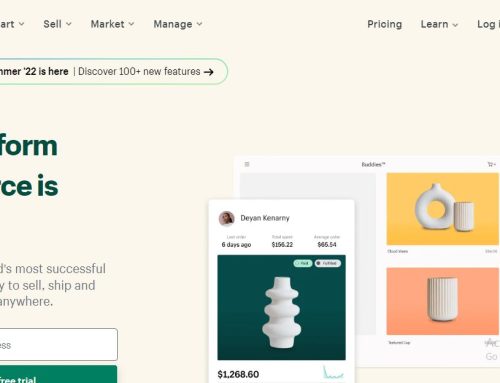The only way to be successful at content marketing is for the reader to say; this is written specifically for me.
Is your manufacturing firm lagging behind the curve? Are you worrying about what to do? The only solution is content marketing!
Although manufacturing is not a fascinating industry, you can make your business attractive and get yourself noticed with the help of content marketing. Content marketing is an effective strategy for manufacturing companies, boosting brand awareness, driving traffic to your website, and attracting new customers.
According to Industry reports, 74% of marketing firms have used content marketing and successfully built trust and credibility with their potential clients. Let’s explore content marketing ideas for manufacturers and see how they can lead to increased growth and success.
What Is Content Marketing?
Content marketing is a marketing technique that attracts and engages potential customers without directly selling them products. It involves creating relevant, valuable, engaging, and compelling content, answering readers’ questions, solving their problems or providing amazing information.
Content marketing lets you showcase your expertise to your potential clients efficiently, generating business results. Excellent content marketing strategies include;
- Telling a story
- Adding Creativity
- Data-driven targeting
According to a recent report by Content Marketing Institute, 60% of manufacturers adjusted their editorial calendar, 70% changed their targeting strategy, and 57% put more resources toward online communities in 2020.
So, content creation and website enhancement are the top areas for manufacturing marketers, and they must invest in them. Let’s learn more about content marketing, its strategies, ideas, and more!
Content Marketing Strategies for Manufacturers:
Content marketing is a tactic that is easy to talk about but difficult to execute. However, according to a recent report, 30% of manufacturers claim their organization became extremely successful due to implementing content marketing strategies, while 61% indicated moderate success.
Let’s have a look at these strategies!
-
Identify Your Target Buyer
The initial step of a successful content marketing strategy is to figure out to whom you are trying to reach! A one-size-fits-all message doesn’t work, so segment your target audience before creating content. Different buyers want different things and consume your content differently, so understand your audience and desired tone (formal/informal). Otherwise, you will waste your time, effort, and resources.
Moreover, your marketing message must resonate with the searcher and the decision-maker. For this, interview some of your top customers and ask them where they conduct market research, what their challenges are, and what type of content they are looking for. Use these insights to connect with more customers!
-
Determine Priority Keywords
Like everybody else, B2B manufacturing buyers begin their research by typing specific terms or phrases into search engines like Google. Generating content about relevant topics and incorporating these terms or phrases into that content will increase the chances of showing your content in the buyer’s search engine results.
Several keyword planning tools, including Ahrefs, Google Keyword Planner, and SEMrush, help you determine what is being searched for in your market. You can use a variety of enterprise SEO tools to dig topics, do KW research & even write content outline. Use these keywords, terms, or phrases in your content, and it will improve your ranking on search engines.
Take an Inventory of Your Content
As the content marketing battle is starting, writing content on new material may be daunting. You are wrong if you think you do not have much content to work with. If you have created instruction manuals, FAQs, sales presentations, and other documentation to sell your products to your customers. In that case, you can modify them into resources, eBooks, white papers, blog articles, or infographics. It will help your clients to get closer and closer to decision time.
-
Talk to Your Company’s Experts
Are you in charge of your manufacturing firm’s marketing? You should ask other non-marketing people for help because they are on the front lines daily and have information about sales, production, customer service, etc. So they understand your prospects, customers, and the problems they are trying to solve.
Asking a few questions to these folks will help you receive more material and generate new content ideas.
-
Create a Content Marketing Mission/Calendar
Content Marketing Institute claims that 45% of the manufacturers have a content marketing mission statement to support their strategy. In this statement, you must articulate your company goals, reflecting your prospects and what you want your customers to get out of the content.
All your content should align with your mission, highlighting which problems you solve for your target buyers. Solve, don’t sell! This strategy will drive more organic traffic to your website, increase brand awareness, generate sales-qualified leads, convert those leads into customers, and improve overall customer retention.
-
Craft Content Full of Facts, Not Fluff!
Audiences researching manufacturing solutions want trusted, credible facts, valuable data, certification badges, testimonials, and seals to back it up. So, ensure each piece you craft is accompanied by a next step and a call to action. So, once they are finished reading, introduce them to the next content and guide them with your sales funnel.
-
Promote Your Content
Publishing your content on your website is never enough; it is essential to promote it. Because organic search is only one way your customers can find you, promote your compelling content via social media channels, print, offline promotion, paid advertising, traditional online banner ads, content curation tools, the company’s newsletter, on your partners’ websites, etc, this strategy will put your content in front of the buyers you want to reach. Currently, TikTok is ruling the world of social media & partnering with right TikTok ads agency can help you reach target audience on the platform. Similarly, you can try out other social media platforms, to find your sweet spot.
Content Marketing Funnel for Manufacturers
The content marketing funnel is the journey visitors take to becoming your customer. Its stages include;
- Awareness: Customers become aware of your business and get to know the problem they may not have realized they had.
- Interest: Interest is established as they get solutions for their problems.
- Decision: They compare solutions and make a decision.
- Action: The visitor takes action as he has decided what business he wants to work with and become a customer.
The sections of The content marketing funnel include:
- Top of funnel
- Middle of funnel
- Bottom of funnel
Let’s discuss what types of content you can create for each section of the funnel and what their goals should be!
Top of Funnel Content Marketing Ideas for Manufacturers
Content Marketing Institute (CMI) revealed marketers create 50% of their useful content at the top of the funnel. At the top of the marketing funnel, you establish a rapport with the visitors who landed on your site via SEO, PPC, and SEM programs. They are looking for high-level information about a specific product and service, need answers to their queries, or want a solution to a problem they are experiencing.
Its goals and metrics include;
- TOF goals: Segment visitors/acquire new traffic
- TOF metrics: number of new and direct visitors or retargeting lists
Let’s explore the types of content you can create at the top of the funnel!
-
Blog posts
They are a crucial part of content marketing and include educational information that distils complex concepts into valuable insight. Blogs are popular and effective ways to reach your ideal audience and improve your reputation. According to a HubSpot study, companies who use blogs get 67% more leads than those who do not. Blogs are cheaper, easier to create, and have a longer lifespan, improving your visibility and attracting potential customers. You can optimize your blogs according to SEO to generate leads and boost organic traffic to your website.
-
101 eBooks
eBook is a great tool to tackle a topic in more depth. An e-book is less like a book and more like a long blog post, providing your target clients with an in-depth view of your product or industry. They take more time and effort, include informal language and visuals, and explain complex topics efficiently, making them easy to consume.
However, reading an e-book is a big-time commitment, so make it clear what the reader will get from it.
-
Manufacturing Podcasts
Recording podcasts is a popular method, helping you reach a broader audience. It is easier to create as it is strictly audio broadcasting, and you have to record interviews with industry experts, share your advice, or tell entertaining stories.
According to Edison Research, 104 million Americans listen to podcasts monthly. So, podcasts will help increase your audience and acquire more leads.
-
Industry Research
Your potential customers are not only interested in your products and services, but they also have other priorities and projects. Providing in-depth insight beyond your capabilities can position you as a valuable partner, and industry reports are undoubtedly powerful in this regard.
-
Factory Tour and Product Videos
Videos are critical in content marketing, increasing your ROI and account for 74% of all online traffic.
Industrial manufacturers must give a tour of their factories to their prospects to showcase their processes and capabilities and add a human element to build a connection. 92% of marketers say videos are an important part of marketing strategy and increase traffic to your site. You can put videos on your About Us, Home page, and YouTube, letting your customers know your brand on a personal level.
Moreover, you can create product and demo videos or videos on other valuable insights to address common issues that arise during the sales process. Videos are an affordable way to engage with your viewers, telling more about the company’s values and urging customers to trust in them.
-
Social Media Posts
Social media marketing engages B2B customers, and it is an important rule of thumb as marketing involves being everywhere your buyers are. Being active on social media will increase your brand’s visibility and grow traffic to your website. Your social media posts must be informative and entertaining, ensuring your messaging is consistent across all your posts.
-
FAQs
FAQ pages are a great informational resource for current and potential customers. FAQs create trust between the company and consumer and answer their more common questions, eliminating the need to contact customer support. It is an excellent opportunity to solve customers’ queries and ease their worries, directing them towards your specific product.
-
Whitepaper
A whitepaper refers to a technical paper about a manufacturing product or concept. It provides technical details about a specific product and requires a lot of research. The whitepaper can be a lead magnet and useful when prospects want to make their buying decision.
-
Infographics
Infographics present content in an easy-to-consume format, clarifying concepts via visual elements. It displays valuable data at a low cost and makes technical information easier to understand.
Middle of Funnel Content Marketing Ideas for Manufacturers
The top of the funnel is the widest, while the middle of the marketing funnel is the deepest. This is because the evaluation process takes longer, especially for B2B buyers. It allows you to build your initial relationship, establish trust, and highlight what separates you from others.
In the middle funnel, the consumers know there are solutions to their problems and want to know more about them. Their interest is beginning to develop, and they want to research to make the right decision. Its goals and metrics include;
- MOF goals: returning visitors or leads.
- MOF metrics: number of returning visitors, new leads, or retargeting list.
Let’s explore the different content types you can create at the middle of the funnel to reach your desired goals.
-
Comparison Guides & Industry-Focused Content
Buyers may have different options, so help them with a comparison guide and industry-focused content to know which is right for them. Comparison guides spell out the pros and cons of different approaches, while industry-focused content tells the details of your products, performance curves, sizing dimensions, etc., targeting the key markets you want to work with.
-
Landing pages
Most businesses make confusing landing and website pages, resulting in a downfall/failure. Website pages are designed to help your customers explore and get to know your business. However, landing pages are designed for a specific campaign or product, driving your customers towards a particular action. If you are not sure, how your landing page is performing checkout tools like Google Analytics & Mix panel. These tools offer a variety of metrics that can uncover how the audience is reacting with the landing page.
-
Case Studies
The best way to win new customers is to show them how you have helped your existing or previous clients. The case study library highlights your track record of success and is tremendously helpful in this regard. So, in case studies, prove your experience with testimonials, data, and examples, effectively convincing your prospects. You can also share case studies in cold LinkedIn outreach, social media posts, email nurturing campaigns, and your website.
-
Buyer’s Guides
As buyers start formalizing the process of selecting a supplier, help them define it and instruct them in the exact direction with a step-by-step buying guide. It will build your trustworthy relationship with the buyer, taking your business to greater heights.
Bottom of Funnel Content Marketing Ideas for Manufacturers
At the bottom of the funnel, the customers have done their research and know all the solutions and what your brand can offer. At this time, you must give them the final push to convert them into your buyers. The goals and metrics of this phase include the following;
- BOF goals: Maximize conversions
- BOF metrics: Revenue per visit and average order value
Here are the types of content you can create at this phase to maximize conversions. Let’s go!
-
Custom / Pricing Calculator
Show your customers how much money they will spend if they purchase from you and how much they can save, improving your prospective customers’ buying process. Giving them personalized research and buying experiences lets them enjoy the whole process and makes them want to work with you.
-
Virtual events
Online courses, webinars, and other virtual events effectively generate leads, demonstrating complex products and allowing you to reach customers and interact with them on a larger scale.
-
Spec Sheets And Brochures
At this point, specification sheets and brochures are essential as buyers want to know exactly what you are capable of. So, create a downloadable brochure or spec sheet focusing on your products and services and letting customers get all the information to make a financial decision.
-
Sales Pages
They are different pages on your website highlighting your products. So, create one sale page for every product you offer, providing insight into their specific value. The two types of sales pages include;
- Short-form: This short, less complex page is perfect for simple and inexpensive products.
- Long-form: This longer, detailed page is ideal for complex, expensive products.
Whenever you are going to talk about your product, ensure to focus on how your product can benefit your customers. Also, make sure to keep check on your conversion rate numbers. Since, these marketing efforts certainly require a lot of investments and efforts, it is important to understand what is conversion rate marketing & how it can impact overall content marketing for manufacturers.
Content Marketing In the Manufacturing Industry vs. Other Industries
Content marketing is extremely versatile, helping businesses to customize their marketing strategies. Understanding the differences between content marketing for manufacturers and other industries will help you implement effective tactics for your business. Let’s have a look at these factors;
- Complex products: Manufacturers offer more advanced and complex products/services than other industries. So, they have to create content explaining these concepts in an understandable way.
- Dry content: Usually, the manufacturing process seems dull, so marketers must find creative ways to make their content engaging/interesting.
- Niche markets: Manufacturing products are highly specialized, so manufacturers must tailor their content to a niche market.
- Longer sales cycle: Business leaders think hard before choosing a manufacturing firm, so the buying cycle tends to be longer. You will need different types of content to establish trust and increase sales.
- Requires experience: Understanding your customers and demonstrating the level of knowledge and efficiency they are looking for in a manufacturer takes years of experience.
The Verdict
Content marketing strategies inspire manufacturing companies to create excellent content, making your business successful. Although implementation of these tactics takes time, it is well worth the time you invest in.
So, create content that moves your target customers along the marketing funnel and converts them into your buyers. Also, it is recommended to leverage the expertise of veterans, rather than DIY. Consider looking for a digital marketing consultant around your niche who can guide & manage your content marketing efforts in the right way.




